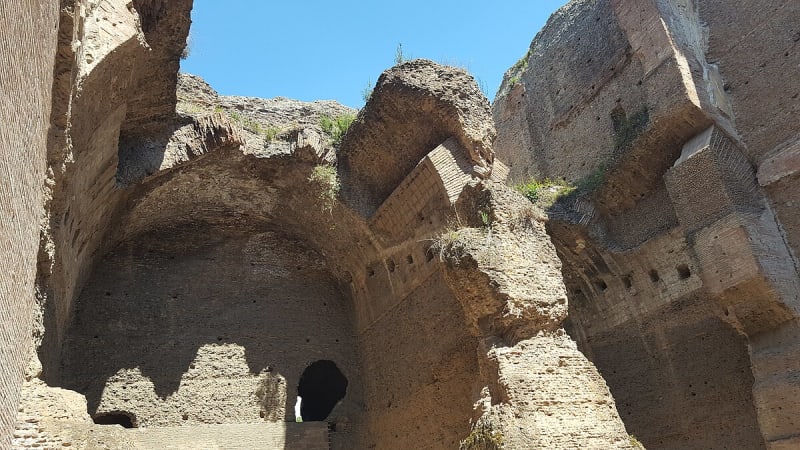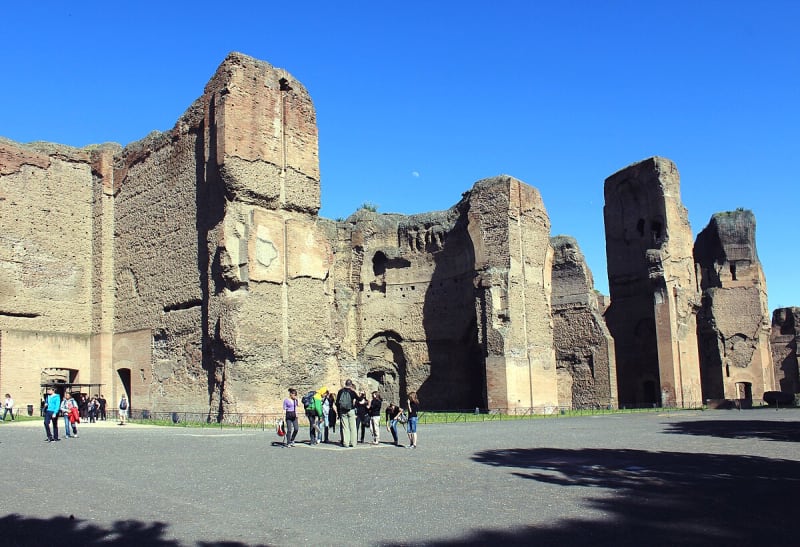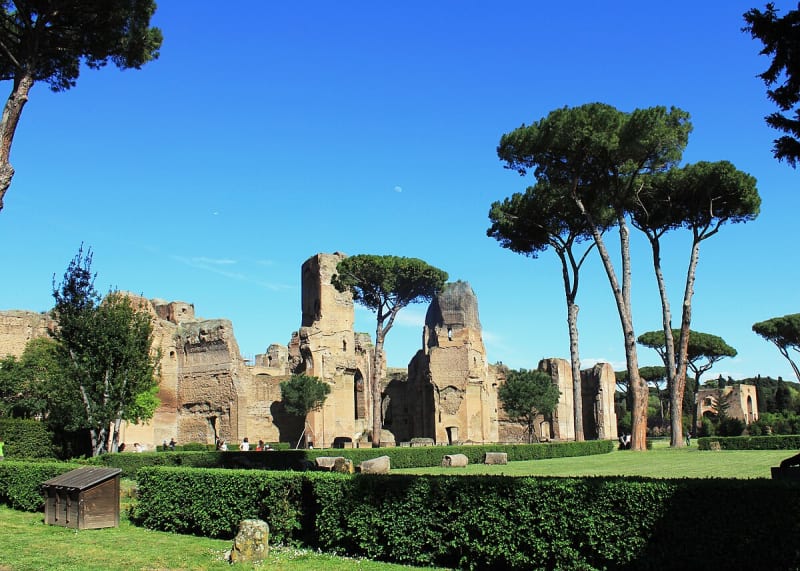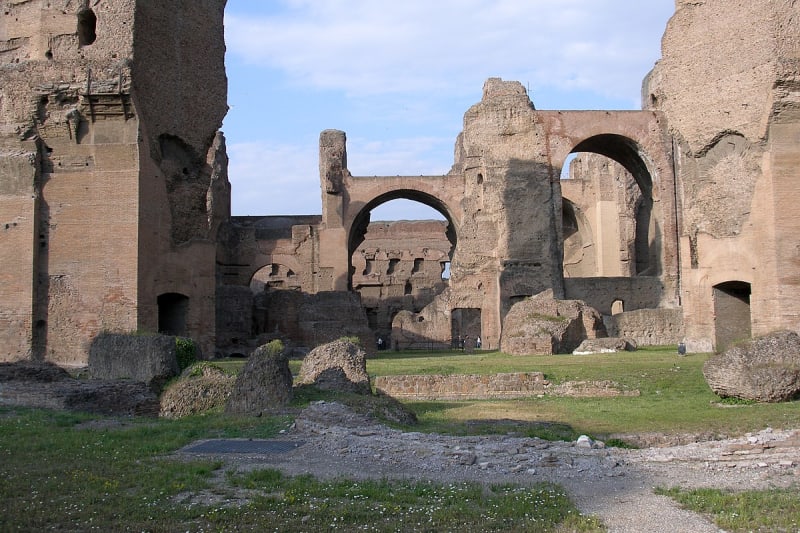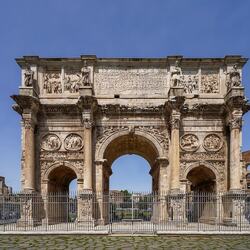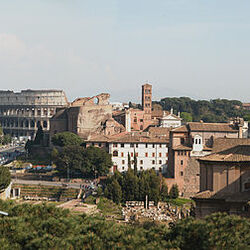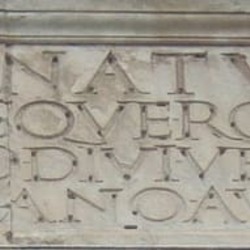Terme of Caracalla
The baths of Caracalla were built in the 3rd century, during the reign of Emperor Caracalla, which determined their name. It was a complex of the largest, most monumental buildings of antiquity. The walls of the baths were made of concrete and covered with thin marble slabs, which gave the buildings an apparent lightness.
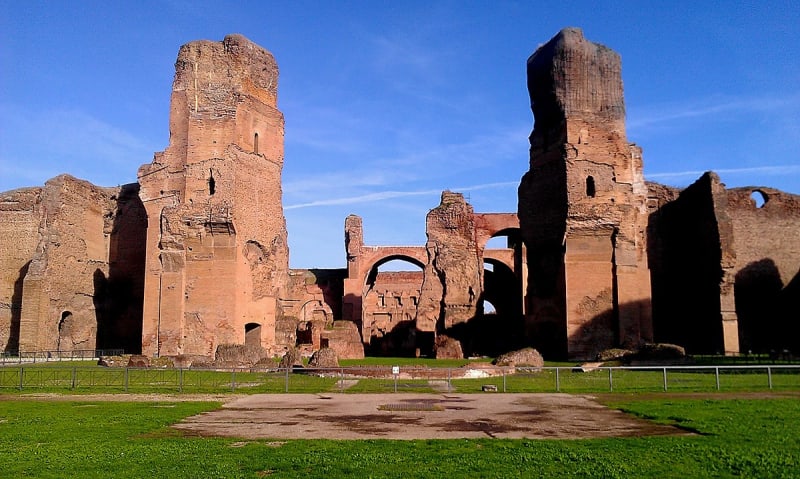
A bit of history
There were many public baths on the territory of ancient Rome, designed for different material levels of residents. Multi-tiered arcades crisscrossed the entire city, supplying them with water. Looking at the preserved ruins, mysterious landscaped hills that have become a legacy of ancient culture, one can rather be surprised and feel their unusual past than enjoy the standard architectural beauty.
In this place on the southern slope of the Aventine Hill, near the beginning of the Via Appia, there were the famous Baths of Caracalla. This is a grandiose complex of buildings, striking in its size, purpose, and luxury of decoration.
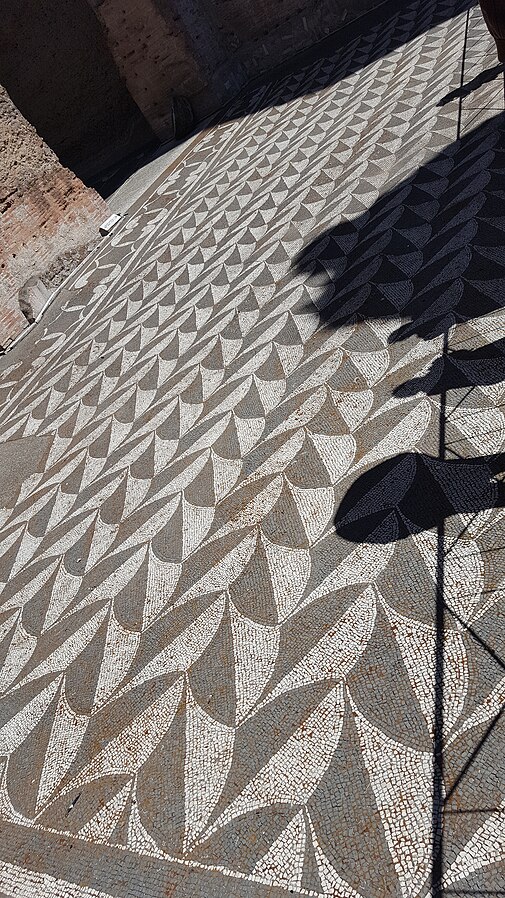
Detailed description
The Caracalla Thermal Baths complex included 64 rooms with unusual windows. Their lighting was interesting: the rays of light penetrated into the rooms through special holes in the dome. The semicircular windows of the main building contained interesting plates of translucent natural stone. Light with an amazing golden hue penetrated through them. The polished marble on the walls seemed to radiate a warm, golden light by itself. Niches were made among the tall columns of the baths. There were statues of famous figures of Hercules and Flora in them. The sculpture ensemble "Farnese Bull" was also located here.
Archaeologists have found evidence that during the heyday of thermae, the main room was often used as an exhibition area. It was occupied by exhibits from the famous museums of Naples and the Vatican. Since the 5th century, the baths of Caracalla have been included in the lists of wonders of Rome. Water for thermal baths was supplied in a special way. It flowed from the Aqua Marcia spring to a special system, was heated and distributed throughout the buildings. The structure of the Thermal Baths of Caracalla contained zones arranged in a strict sequence.:
- Apoditherium or locker room.
- Frigidarium is a cold zone. It was a huge pond (58x28 m) filled with cold water. Its mandatory replacement was performed twice a day. The walls of the room were decorated with beautiful mosaics, lined with marble slabs.
- A tepidarium is a warm bath for gradual warming up. On both sides there were special rooms (semicircular squadrons) for gymnastic schools. Famous figures of athletes were found on their floors. Fragments of a rare mosaic are kept in the Lateran Palace.
- The caldarium is a hot bath. This is a rotunda (diameter 35 m) with a dome. There were small niches around her for private washing. There were recreation areas nearby.
- Sudatorium - steam room with T85 °C.
- Lavarium is a room for pouring water, applying aromatic oils, and taking baths.
Importance for the people
The baths of Caracalla are not just baths, but structures reflecting the lifestyle of the Romans. There were clubs, stadiums, a cultural center, and a garden where visitors from different cultural backgrounds rested, had fun, and engaged in activities according to their needs. You could just sit with friends among the unique sculptures, mosaic paintings on the floor and walls. Each subsequent emperor sought to overshadow the previous masterpieces with their artistic decoration. And they accumulated, enriching the interior and exterior of the ensemble.
Of particular interest was the inspection of the competitions of gymnasts and various athletes, which was held from the windows of the baths overlooking the stadium and the amphitheater. By the way, in the 1960 Summer Olympics, gymnasts competed in an ancient stadium in the prepared ruins of the baths. The rules for visiting baths were constantly changing. In the initial period, men visited the halls completely naked, while women protected their hair and pearl jewelry. With the growing greatness of the Roman Empire, carnal pleasures and thermal baths were increasingly welcomed, which turned into a zone of unacceptable orgies and debauchery.
The Baths of Caracalla worked from 217 to 537, but people and nature destroyed the unique ensemble of antiquity. Research in their place has shown that another world in thermae was created by holding concerts. Their traditions have continued even now, when venues for pop and opera performers were created on the ancient territory. The unique theater operates in the open air and the production of the opera "Aida" by Giuseppe Verdi against the background of ancient, real scenery continues to attract numerous visitors. There is also an interesting thematic museum under the thermal baths.
Despite the fact that it has long been impossible to sit in a luxurious sauna, after visiting the ancient ruins, a person leaves refreshed, rested, with a reserve of new forces that have come from distant historical times. Address: Via delle Terme di Caracalla, 52. Simply take the metro or bus 118, 160, 714, 628.
